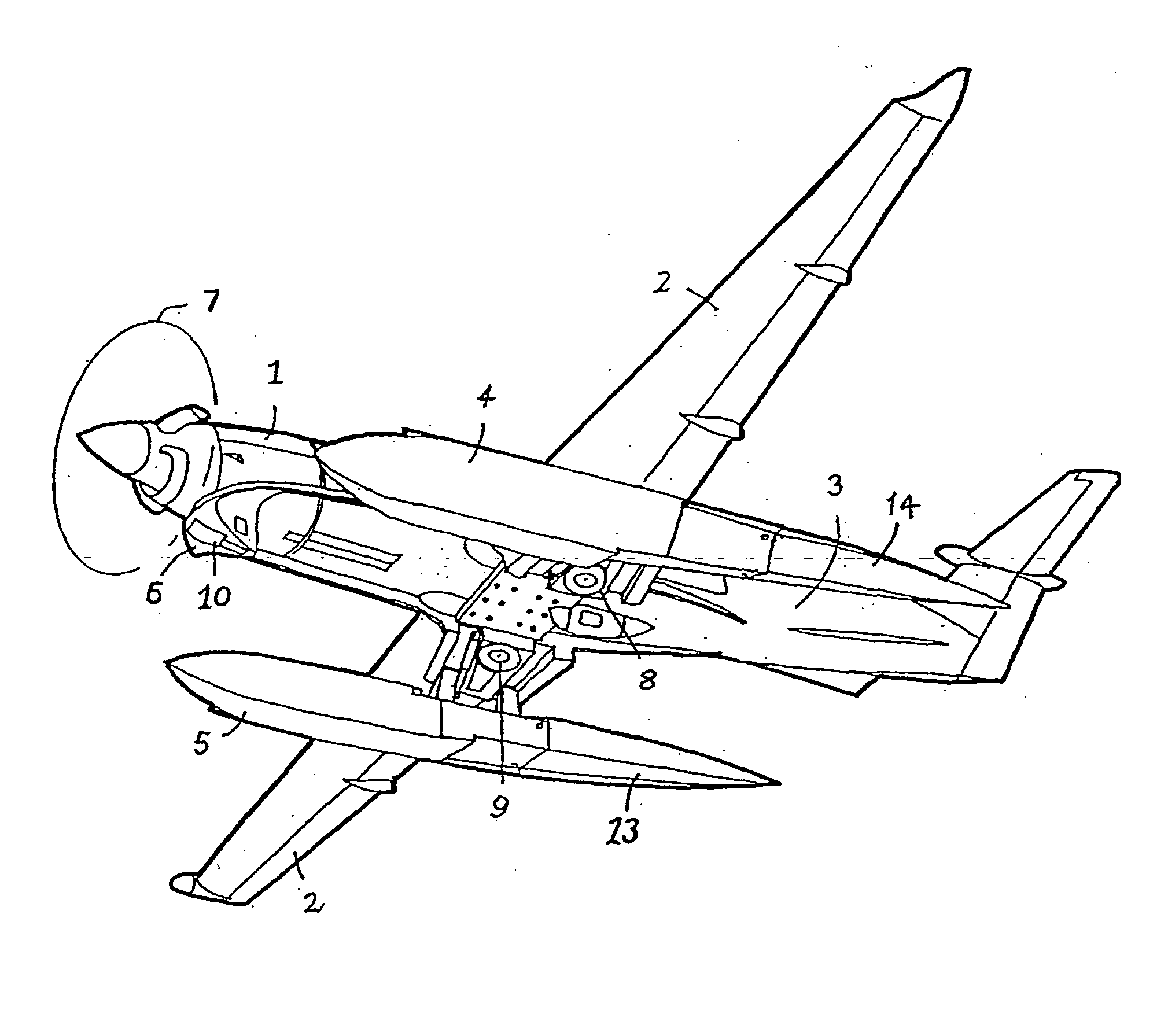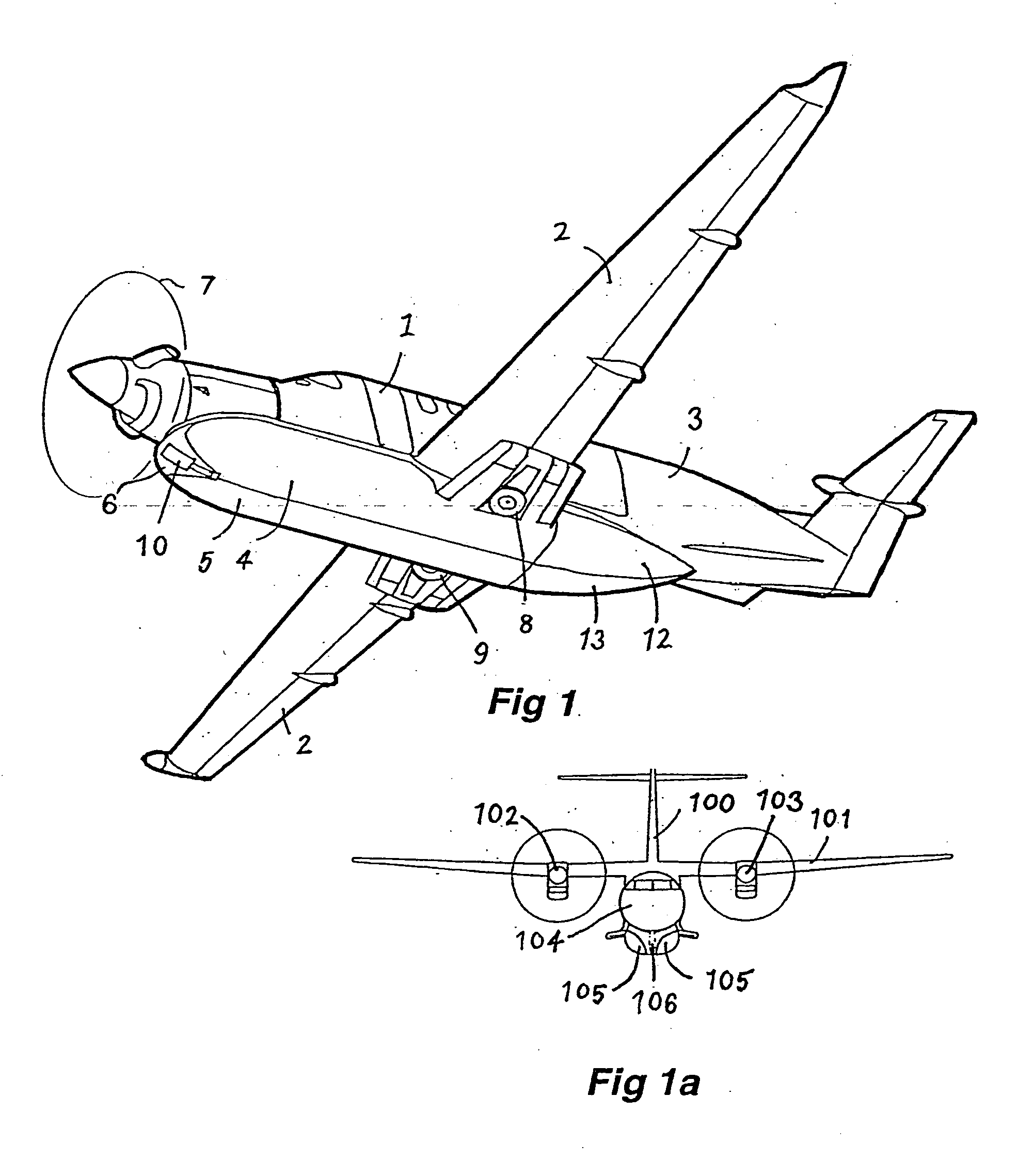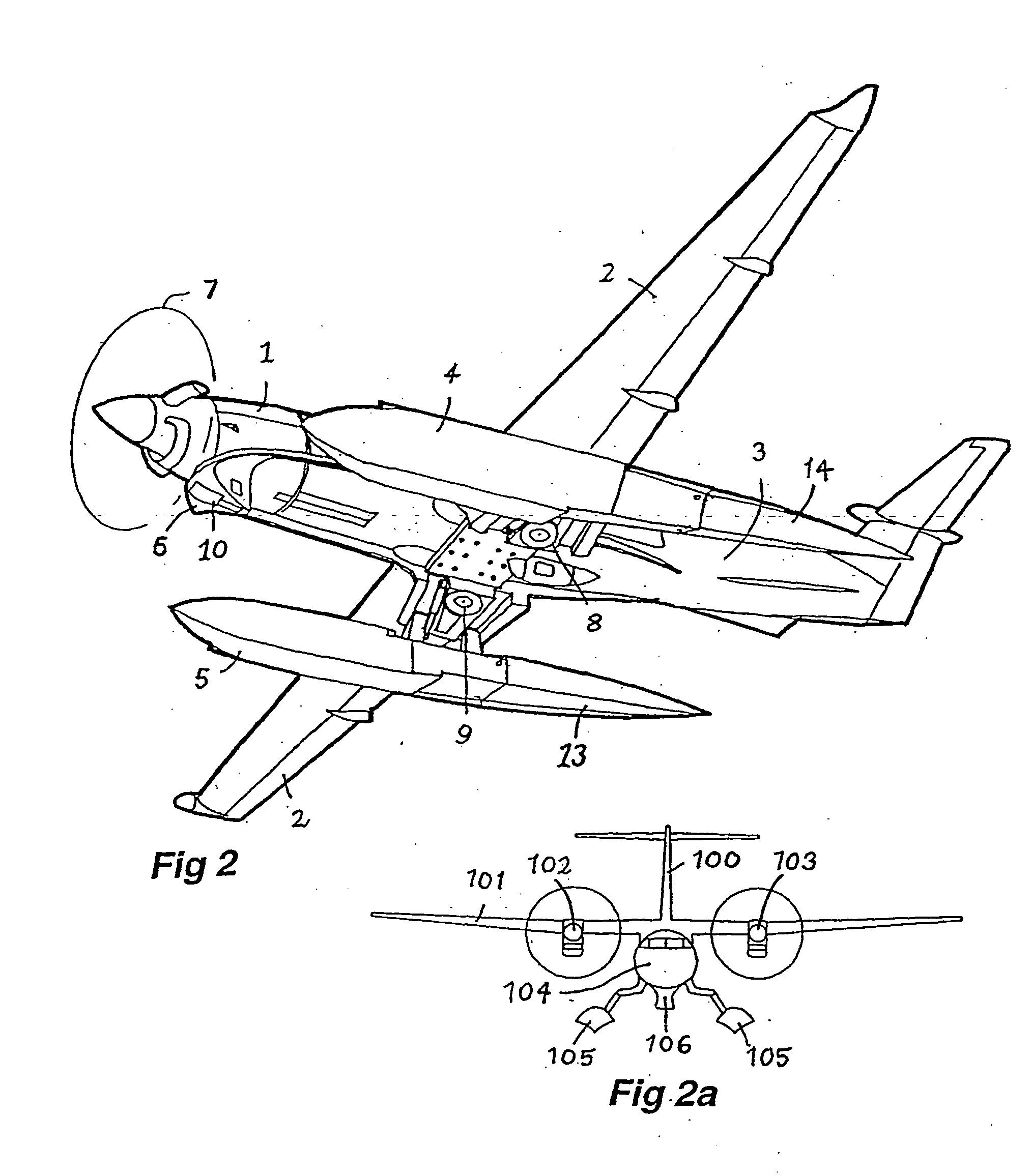Seaplane with retractable twin floats
a technology of twin floats and seaplanes, applied in the field of twin float aircraft, can solve the problems of simply not being aerodynamically efficient, and achieve the effect of sufficient buoyancy and stability
- Summary
- Abstract
- Description
- Claims
- Application Information
AI Technical Summary
Benefits of technology
Problems solved by technology
Method used
Image
Examples
Embodiment Construction
[0044] Now referring to the drawings and in particular to FIGS. 1, 2, 3, 4 and 5, each of these illustrate a twin float aircraft 1 which has fixed wings 2, a main body or fuselage 3, and extending through a forward to rearward alignment of the aircraft 1, floats 4 and 5.
[0045] The floats 4 and 5 in each case are positioned so as to be located in a retracted position at least, behind a fairing 6 which is secured beneath the fuselage 3 and positioned just behind the propeller 7. This fairing 6 forms thereby a portion of the main fuselage 3 which is at a forward part of the fuselage 3 and such that, in the retracted position, each of the floats 4 and 5 is positioned relative to the fairing 6 so that there is an alignment providing a substantially streamline shape across the fairing 6 and from the fairing 6 to each respective float 4 and 5 each of which is located behind the fairing 6.
[0046] In addition, in each case, there is shown appropriately, two side wheels 8 and 9 and a nose wh...
PUM
 Login to View More
Login to View More Abstract
Description
Claims
Application Information
 Login to View More
Login to View More - R&D
- Intellectual Property
- Life Sciences
- Materials
- Tech Scout
- Unparalleled Data Quality
- Higher Quality Content
- 60% Fewer Hallucinations
Browse by: Latest US Patents, China's latest patents, Technical Efficacy Thesaurus, Application Domain, Technology Topic, Popular Technical Reports.
© 2025 PatSnap. All rights reserved.Legal|Privacy policy|Modern Slavery Act Transparency Statement|Sitemap|About US| Contact US: help@patsnap.com



